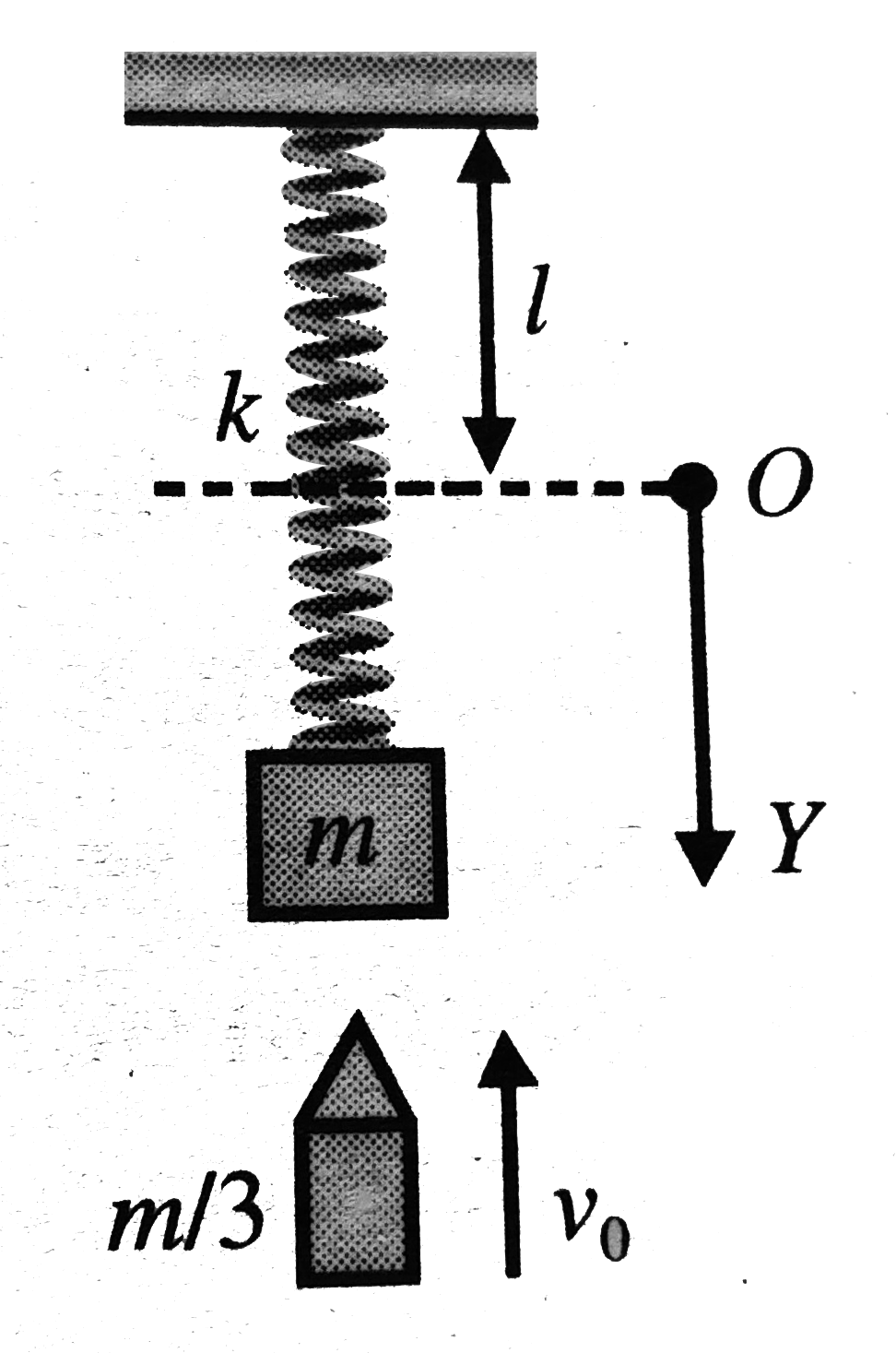If a body looses half of its velocity on penetrating 3 cm in a wooden block, then how much will it penetrate more before coming to rest?
1 cm
2 cm
3 cm
4 cm
The correct Answer is:A
To solve the problem step by step, we can break it down as follows:
Step 1: Understand the Initial Conditions
The body loses half of its velocity after penetrating 3 cm into the wooden block. Let:
- Initial velocity V
- After penetrating 3 cm, the velocity becomes V2
Step 2: Use the Equation of Motion
We can use the second equation of motion, which is:
V2=U2+2aS
Where:
- V = final velocity
- U = initial velocity
- a = acceleration (negative in this case since it's retardation)
- S = distance traveled
For the first case (penetration of 3 cm):
- Initial velocity U=V
- Final velocity V=V2
- Distance S1=3cm
Substituting these values into the equation:
(V2)2=V2+2(−a)(3)
This simplifies to:
V24=V2−6a
Rearranging gives:
6a=V2−V24=3V24
Thus:
a=3V224=V28
Step 3: Calculate the Second Penetration
Now we need to find how much further the body will penetrate before coming to rest.
For the second case (from V2 to rest):
- Initial velocity U=V2
- Final velocity V=0
- Distance S2 (unknown)
Using the same equation of motion:
0=(V2)2+2(−a)S2
Substituting for a:
0=V24−2(V28)S2
This simplifies to:
0=V24−V24S2
Rearranging gives:
V24S2=V24
Thus:
S2=1cm
Final Answer
The body will penetrate an additional 1 cm before coming to rest.
---
The body loses half of its velocity after penetrating 3 cm into the wooden block. Let:
- Initial velocity V
- After penetrating 3 cm, the velocity becomes V2
We can use the second equation of motion, which is:
V2=U2+2aS
Where:
- V = final velocity
- U = initial velocity
- a = acceleration (negative in this case since it's retardation)
- S = distance traveled
- Initial velocity U=V
- Final velocity V=V2
- Distance S1=3cm
(V2)2=V2+2(−a)(3)
This simplifies to:
V24=V2−6a
Rearranging gives:
6a=V2−V24=3V24
Thus:
a=3V224=V28
Now we need to find how much further the body will penetrate before coming to rest.
- Initial velocity U=V2
- Final velocity V=0
- Distance S2 (unknown)
0=(V2)2+2(−a)S2
Substituting for a:
0=V24−2(V28)S2
This simplifies to:
0=V24−V24S2
Rearranging gives:
V24S2=V24
Thus:
S2=1cm
The body will penetrate an additional 1 cm before coming to rest.
Topper's Solved these Questions
- LAWS OF MOTIONBOOK - DC PANDEY ENGLISHCHAPTER - LAWS OF MOTIONEXERCISE - Match the columns
7 Videos
- LAWS OF MOTIONBOOK - DC PANDEY ENGLISHCHAPTER - LAWS OF MOTIONEXERCISE - Medical entrances gallery
39 Videos
- LAWS OF MOTIONBOOK - DC PANDEY ENGLISHCHAPTER - LAWS OF MOTIONEXERCISE - Check point 5.4
20 Videos
- KINEMATICS 1BOOK - DC PANDEY ENGLISHCHAPTER - KINEMATICS 1EXERCISE - INTEGER_TYPE
15 Videos
- LAWS OF THERMODYNAMICSBOOK - DC PANDEY ENGLISHCHAPTER - LAWS OF THERMODYNAMICSEXERCISE - Level 2 Subjective
18 Videos
Similar Questions
Knowledge Check
A bullet fired into a wooden block loses half of its velocity after penetrating 40 cm. It comes to rest after penetrating a further distance of
A22/3 cmB40/3 cmC20/3 cmD22/5 cmA bullet is fired normally towards an immovable wooden block. If it loses 25% of its kinetic energy in penetrating through the block at thickness x, the distance penetrated by the bullet into the block is
A4xB6xC8xD2x
A bullet fired into a fixed target loses half of its velocity after penetrating 3 cm . How much further it will penetrate before coming to rest assuming that it faces constant resistance to motion?
View Solution
A block of mass m is suspended from one end of a light spring as shown. The origin O is considered at distance equal to natural length of the spring from the ceiling and vertical downwards direction as positive y-axis. When the system is in equilibrium a bullet of mass m3 moving in vertical up wards direction with velocity v0 strikes the block and embeds into it. As a result, the block (with bullet embedded into it) moves up and start oscillating. Based on the given information, answer the following question:
Q. The time taken by the block bullet system to move from y=mgk (initial equilibrium position) to y=0 (natural length of spring) is (A represents the amplitude of motion)
View SolutionA block is projected along a rough horizontal road with a speed of 10 m/s. If the coefficient of kinetic friction is 0.10, how far will it travel before coming to rest?
View SolutionWhen a celling fan is switched off, its angular velocity falls to half while it makes 36 rotations. How many more rotations will it make before coming to rest ?
View SolutionWhen a celling fan is switched off, its angular velocity falls to half while it makes 36 rotations. How many more rotations will it make before coming to rest ?
View SolutionWhen a ceiling fan is switched off, its angular velocity reduces to 50% while it makes 36 rotations. How many more rotations will it make before coming to rest?(Assume uniform angular retardation)
View Solution